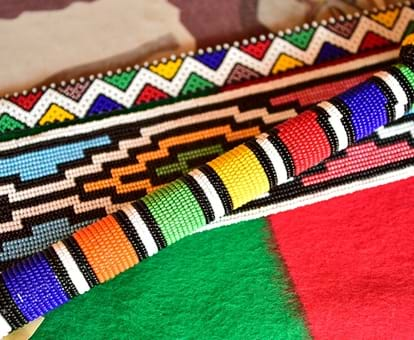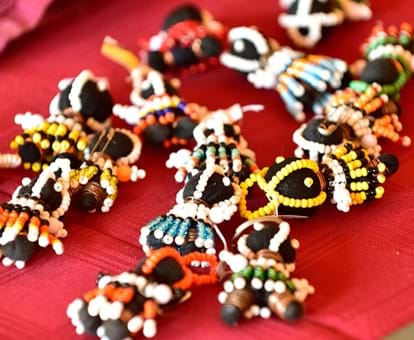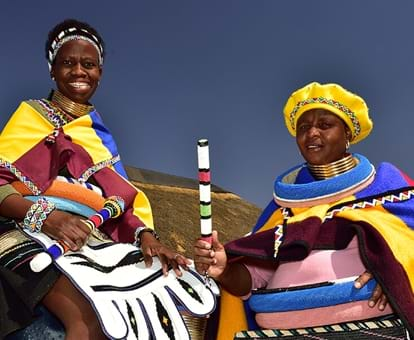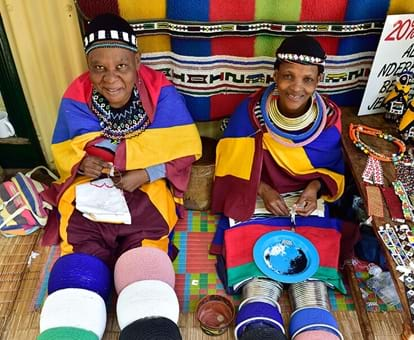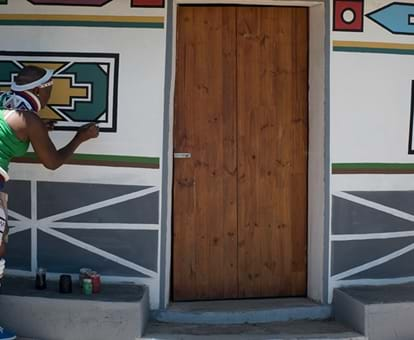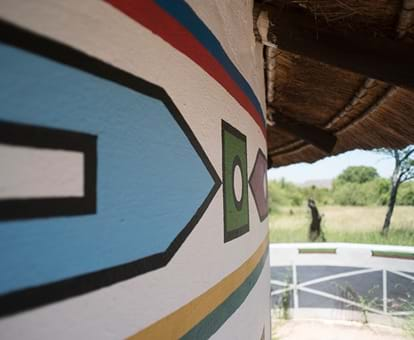By creating an account, I agree to the
Terms of service and Privacy policy
Choose your country and language:
Africa
Americas
Asia Pacific
Europe
TThe Ndebele of South Africa constitutes one group of people whose identity has survived precarious conditions and existential crisis under the weight of changing power dynamics of internal and external factors from pre-colonial to present times. Culture constituted one of Ndebele identity’s defining elements as it emerged and was expressed as a continuous formulation, sifting through the grids of historical forces, both internal and external, across space and time.
Beadwork, wall paintings, architecture and distinctive ways of dressing are more tangible ways of Ndebele identity and culture through which they have maintained a consciousness of belonging in the midst of precarious existence that confronted them since the late 19th century.
BBeadwork and wall paintings in Ndebele communities have evolved over time and have a long history that can be traced back to the 1940s. Art production as an expression of Ndebele identity and the attachment to this form of material culture were largely shaped by the defeat by the Boers in 1883 and the resulting loss of independence and sovereignty, decentralisation and dispersing of the tribe, dispersal patterns after loss of land, and scattering of their polities.
After the defeat, beaded adornment and architectural designs were maintained as a prominent visual form of material culture to deliberately claim a consciousness of Ndebele identity. In other words, paintings in particular became an expression of cultural resistance and continuity. Everyday intricacies of what constituted Ndebele-ness and their values were communicated through these wall paintings. For example, women’s roles at home or in the domestic arena were aesthetically reflected through wall paintings. These paintings also cast women as nurturers of Ndebele cultural identity.
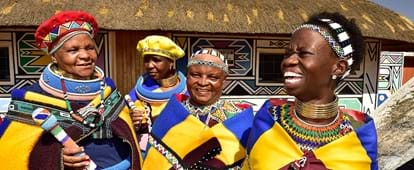
DDifferent kinds of beaded adornment convey messages of social meanings such as age sets and stages of growth from childhood to adulthood. For example, blankets commonly worn by Southern Ndebele women have different beads distinguishing newly married women from older women. Beadwork has a communicative power especially to the insider who can distinguish different types of beaded adornments and associate them with the respective age set. Additionally, beaded adornments serve a cultural purpose in ceremonial traditions, like girls and boys’ initiations where the initiates and their parents wear beaded garments, which symbolically communicate the value attached to initiation.
AAspects of Ndebele art designs have been appropriated by the post-1994 government as part of crafting a national identity as expressed in paintings in streets, billboards and tourist vouchers. This has preserved Ndebele cultural practice in many ways and Esther Mahlangu, one of Ndebele culture's icons, uses the colours of the South African flag in some of her paintings.
Mahlangu has a sustained interest in expressing, preserving and nurturing Ndebele cultural identity by producing beadwork and wall paintings that have earned her an iconic status of representation of Ndebele culture in South Africa and beyond. The visibility of Ndebele art forms in public spaces reflects the mutually constitutive ways of the appropriation of Ndebele culture as part of the South African traditional arts.

AAbout the author
Sifiso Ndlovu is a post-doctoral research fellow at the Public Affairs Research Institute (PARI) at the University of the Witwatersrand, South Africa. Her PhD project broadly examined intersections and divergences in the articulations of belonging to ethnic identity and nation-building in post-apartheid South Africa in the culturally heterogeneous KwaMhlanga region. She also holds an MA in Political Studies from the University of the Witwatersrand. She is a budding academic who has received academic awards and scholarships, including the Next Generation Social Sciences in Africa Doctoral Fellowship, University of the Witwatersrand’s Council Postgraduate Merit Scholarship, National Research Foundation bursary, and University of the Witwatersrand’s Postgraduate Merit Award Doctoral Scholarship.
Related articles

|Terms and conditions|Disclaimer|Privacy policy|Social Media Terms and Conditions|Competition Terms and Conditions
